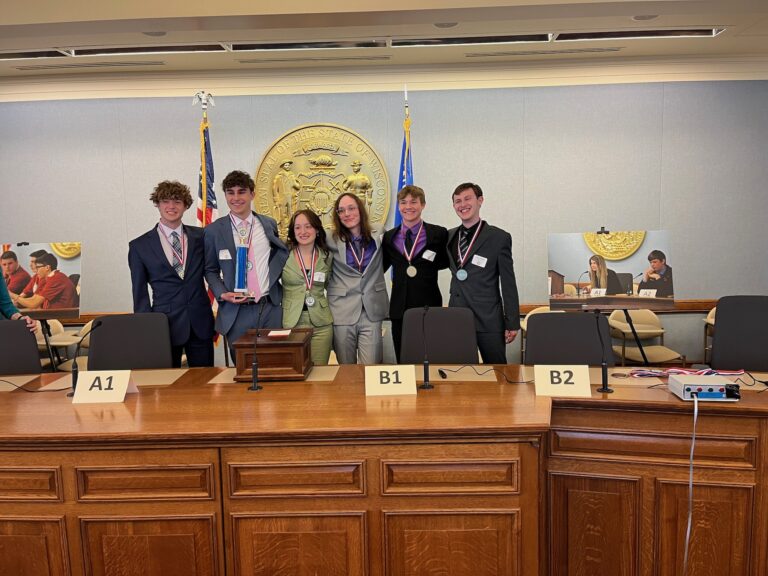Back Home by Chris Hardie
- Download this column as a Word document
- Download the photos that accompany this story
- Chris Hardie’s headshot
There are many highways across Wisconsin that take you to your destination, but sometimes I like to take the road less traveled.
When time allows, turning off the main highways and following the back roads across the rural landscape makes me appreciate the beauty of where we live even more. That’s especially true when I’m traveling through the Driftless Area with its panoramic vistas and winding roads through the coulees.
Recently I was driving from Westby to La Crosse and decided to take a detour from Hwy. 14/61 along Hwy. MM. The fact that it is officially Rustic Road 26 – a 5.3-mile route that follows Brinkman’s Ridge with views of the Mississippi River – was a plus.
The views of the river were stunning, but the bonus for me was driving past the Oehler Mill along Mormon Coulee Creek. This 1862 stone mill was built in a location steeped with history.
In 1841 – the same year that 19-year-old Nathan Myrick built a trading post in what would become La Crosse – a group of Mormoms came north from their settlement at Nauvoo, IL to obtain lumber to send downstream. Three years later a group of Mormoms traveled to the coulee that later bore their name to set up a settlement.
The creek with the mill potential was clearly seen by Mormon settlers Asher and Effelender Gressman in a letter dated Nov. 6, 1844 to Levi Moffett of Des Moines, IA.
“Here is a great mining country and the best mill site I ever saw,” the letter said. “By building a dam a hundred feet long, you can raise the water 40 feet high, if you choose. The stream is about 12 feet wide and will average 2-feet deep at any season of the year, with a rapid current and the best water I ever drank, supported by springs.”
A community of about 20 Mormon families – about 160 people – arrived in the fall of 1844, some of them coming from the pineries further north around Black River Falls that had been established as early as 1839 to harvest lumber.
Some of the men were employed by Myrick over that winter to cut firewood, but the families left in March 1845.
It didn’t take long for new settlers to recognize the potential of the site. Valentine Oehler came from Germany and bought land in Mormon Coulee in 1855. He and his brother Gottfried built a stone dam and carved a tunnel out of the stone bank next to the dam to let the excess water flow through.
The first mill was built for sawing wood, but it was converted to a grist and flour mill in 1858. The present stone mill structure was built in 1862.
According to the website (oehlermill.org), the Oehler Mill primarily served local, surrounding farmers largely in Mormon Coulee. In 1881 there were 15 flour and feed mills – all powered by water – in the La Crosse area.
Wheat was transported to the mill by horse and cart and the mill turned it into Red Rose Flower. Nearby was an artesian well, a cave and a pavilion that became a local picnic and park area.
Gottfried died in 1895 and the mill was passed on to his son Louis, who was also a partner in the Chaseburg Roller Miller.
Louis’s brother John was the owner of a mill in Rushford, Minn., and brothers Fred and Gustav also helped with that operation.
The Oehler Mill stopped operations in 1918 and Louis lost the feed mill in 1922. The property – 112 acres, including the mill, the park site, dam, mill pond and the cave – ended up under the ownership of Robert and Lucille Swing in 1950.
Flooding in 1950 destroyed most of the stone dam, but the Swings continued to host many social gatherings and picnics. Robert Swing died in 1994 and his widow Lucille in 1999 donated the land north of the mill – including the dam, cave and park – to the Diocese of La Crosse. Part of the land was used to build the Our Lady of Guadalupe Shrine.
Luclle died in 2012. Today the dam and about 5 acres – including the mill pond – are owned by John Swing Jr. The Wisconsin Trust for Historic Preservation placed Oehler Mill on its list of 10 most endangered historic properties in 2002. The trust states that the mill “stands in a prime area for development, rezoning, and urban encroachment.” The area was listed on the National Register of Historic Places in 2013.
I pulled off to the side of the road to take a few photos of the mill, which is surrounded by houses on each side once built by the Oehlers. Not far up the road is a cemetery where many of the Oehlers and their family were buried.
Restoring the mill would take lots of money and effort, but it seems to be holding up well. It’s a great example of an industry that was important in building our state.
Chris Hardie spent more than 30 years as a reporter, editor



